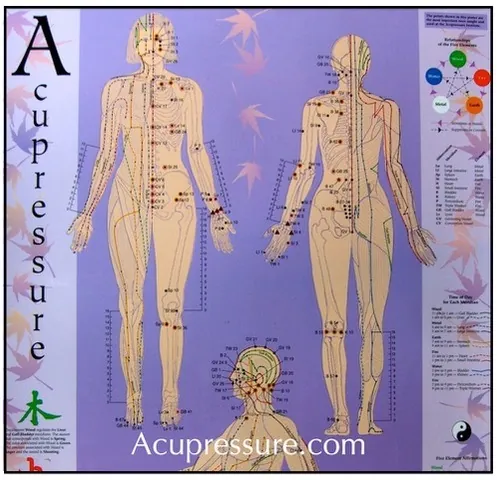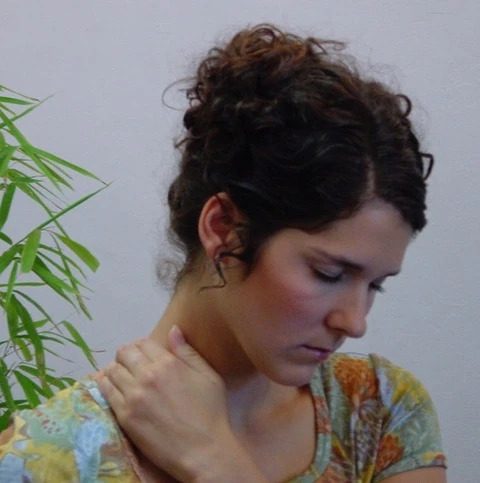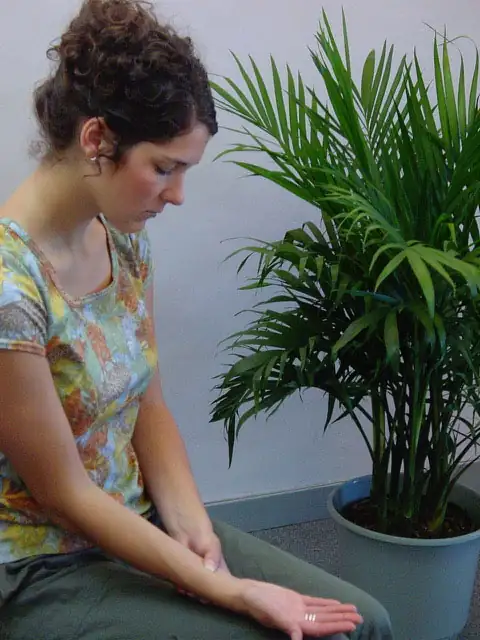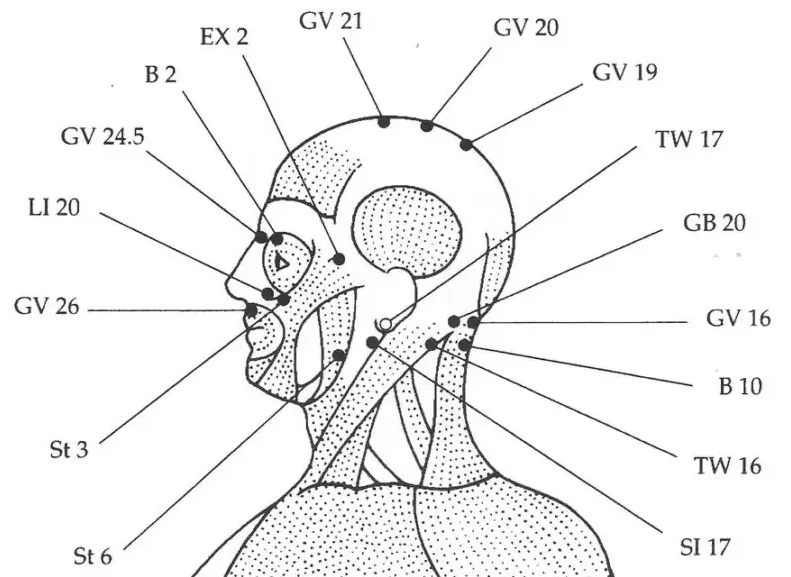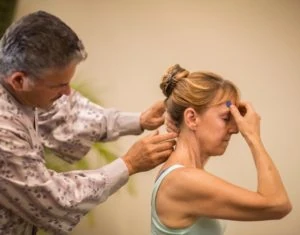As Acupressure evolved, each of the Points was named poetically with a Chinese character. The imagery of its name offers insight into either a Point’s benefits or location. For instance, the name
Hidden Clarity refers to the mental benefit of that Acupressure Point: it clears the mind.
Shoulder’s Corner refers to the Point’s location. The
Three Mile Point earned its name because it gives a person an extra three miles’ worth of energy. Runners and hikers have used this famous Point to increase stamina and endurance.
For Meditation: Some of the names of the Acupressure Points also serve as a powerful meditation tool. By pressing a Point and silently repeating its name, while you visualize its benefit and breathe deeply, you can realize the full potential power that each Point offers.
Try this: hold the Sea of Vitality Points in your lower back by putting your hands on your waist, then sliding your thumbs toward your spine and pressing them on the large muscles that run up and down alongside your spinal column.
Next, breathe deeply and visualize each breath replenishing your deep reservoir of vitality. Use the power of your mind to strengthen or help heal your lower back. Feel the energy flowing in your body.
For Affirmations: You can create affirmations with the names of the Acupressure Points. These are powerful action statements that amplify a Point’s benefits. For example, hold the Letting Go Point on the upper, outer chest, a few inches below your collarbone, with your fingertips. Breathe deeply. Imagine yourself letting go of tension and frustration.
As you hold and breathe into this Acupressure Point, repeat a healing phrase to yourself, such as “I am now letting go of all negativity and stress. I am calm.”
To learn more about using Acupressure to address emotional issues, here are the
Acupressure for Emotional Healing book and the
Touching Emotions video.

